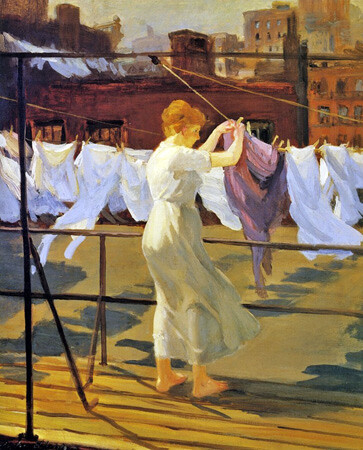→ Continued from “Culture Class: Art, Creativity, Urbanism, Part II: Creativity and Its Discontents” in issue 23 and “Culture Class: Art, Creativity, Urbanism, Part I: Art and Urbanism” in issue 21.
PART THREE: IN THE SERVICE OF EXPERIENCE(S)
1. Jungle into Garden
In the not-so-distant New York past, tenement roofs, and even those of lower-middle-class apartment buildings—ones without doormen, say—were where women went with their washing and their children, in good or just tolerable weather, to hang the damp laundry on the line, thus joining a larger community of women in performing the necessary and normal, good and useful, labor of reproduction and maintenance of family life. (The clothes themselves, and the hanging of the laundry, were signals easily interpretable by other women as to wealth, status, moral character, and even marital harmony.) For men, many an apartment roof held the lofts of racing pigeons, the raising of which is an intergenerational hobby. Before air conditioning, you went to the roof for solitude, and for some prized “fresh air,” and if you were lucky you could catch sight of the nearest body of water. The roofs of loft buildings, of course, served no familial functions. Roofs with gardens were pleasant idylls for luxury penthouse spaces, absent of the gloss of use value attached to urban farming or green roofs.


The new, and newly relaxed, attitude to the (apparently) natural world in New York—in contradistinction to a city like Helsinki, where wildness is not appreciated1—is reflected in the resurrection of the city’s High Line, a disused elevated industrial rail line in lower Manhattan’s far-west former industrial zone.2 Its salvage and conversion into a Chelsea park, with its (re)importation of frank wild(er)ness into the city, began as a quixotic effort by a couple of architects but soon became a patrician project, and then a municipal one.3 It marks a further step in the long transformation of urban waterfronts, formerly the filthy and perilous haunts of poor, often transient and foreign-born, workers servicing the ports into recreational and residential zones beckoning the mostly young and decidedly upper middle class. The water’s edge, which once figured as the dangerous divide between this-world and underworld, between safety and the unknown, now promises pleasurable adventures in travel or beach-going.
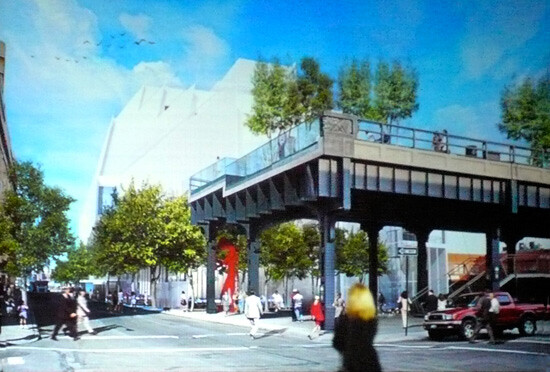

In another register, the city has now decided to embrace neighborhood community gardens, especially in places where the working class has been effectively priced out, a contrast to the 1990s when hard-line suburbanite mayor Rudy Giuliani tried to destroy many of these oases (which he considered “socialistic”), often painstakingly reclaimed from trash-strewn wastelands that had fallen off the city’s tax rolls and into public receivership, by selling off the plots to developers at bargain rates. The city now also permits the formerly banned keeping of chickens (but never roosters) and bees anywhere in the city.4 In my neighborhood, the still-slightly-gritty-but-on-the-way-to-becoming-hipsterland Greenpoint, in Brooklyn, some enterprising young women have started a well-publicized commercial rooftop “farm.”5 Other incipient hipster neighborhoods are poised to copy. Please try not to think of Marie Antoinette’s Petite Hameau, her little farm on the grounds of Versailles, for creatives are not aristocrats, and poor people too are finally allowed to keep such animals and grow cash mini-crops.
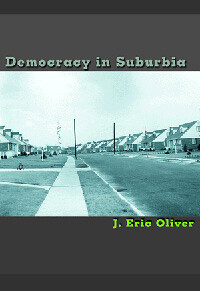

Though they may not be aristocrats, accustomed to hereditary rank and privilege, creatives belong to the first generation to have grown up within an almost entirely suburbanized America.6 US political scientist J. Eric Oliver, in Democracy in Suburbia, spells out the links between the suburban retreat to “private life” and the removal of conflict and competition over resources among urban groups:
When municipal zoning authority and other advantages of smaller size are used to create pockets of economic homogeneity and affluence, the civic benefits of smaller size are undermined. The racial bifurcation of cities and suburbs also has civic costs, partly through concentrating the problems of urban areas in racially mixed settings. By taking much of the competition for resources and much of the political conflict that naturally exists among members of an interdependent metropolitan community and separating them with municipal boundaries, suburbanization also eliminates many of the incentives that draw citizens into the public realm.7
Thus we should read the “becoming creative” of the post-industrial urban core as the formation of a homogenous space drained of the incentives for political engagement. Philosopher and political scientist Seyla Benhabib has characterized, and criticized, Hannah Arendt for the limitations in considering the public in terms of agonistic and associational spheres. The former, Benhabib maintains, is out of step with the “sociological reality of modernity, as well as with modern political struggles for justice,” through its preference for theatricality, for politics as action undertaken at least partially for its own sake and distinct from considerations of instrumental reason. Even without taking sides, it is possible to read the decline of both models of politics, of association and agonism, in the new “creative sphere” of the upper-middle-class urban elite. The public stage of civic action is increasingly coterminous with the preferences of a specific class, preventing both association and agonism—at least to the extent that either of those would be worthy of the term “politics.” It is in this sense that we must consider the newfound municipal enthusiasm for parks and park-like experiences, and the sanctioning of “neo-hippie” chicken-keeping and urban and rooftop farming, along with many of the examples to follow, as bound up with the shift in the class composition of the urban fabric.
The greenmarkets sited around New York City, the bicycle lanes, and the outdoor patios built in the middle of busy streets, express the conviction that the city is no longer a concrete jungle but a cultivated garden enclosing a well-managed zoo or kindergarten, in which everyone and his or her neighbor is placed on display, in the act of self-creation, whether you choose to look or not. The gardens, urban and rooftop farms, water slides, and climbable sculptures that have replaced the modernist model of public art works (which had itself displaced the state-sanctioned monumentalism of previous eras) must be understood as of a piece with the increasingly suburban character of creative-class politics.


If we consider the issue in terms of the role of art sited in public spaces, it would seem indisputable that the “public art” (or “art in public”) sector in the US has turned to a service/experience model. The modernist model of public art, which relied heavily on what we might call abstractionist inspirationalism or on architectural or social critique, had elicited increasing incomprehension and annoyance from the wider public; its ship finally foundered with the removal in 1989 of Richard Serra’s abstract, minimalist, site-specific Tilted Arc (1981), describable perhaps as an artful but rusty wall of COR-TEN steel, from its position in front of a lower Manhattan federal courthouse.8 In contrast, The Gates, Christo and Jean Claude’s 2005 project for New York’s Central Park, underlined the role of public art as a frame for narcissistic self-appreciation on the part of bourgeois park-goers and city fathers, who may see themselves perambulating through a proud and cohesive body politic. Further, watching others pace through The Gates permitted a grandiose self-recognition, in which participants see each other and acknowledge the (rightful) presence of each on the grand stage with the figure of Nature hovering o’er.9 This role of forming and framing the New York polis was already played by public gardens, like Brooklyn’s Prospect Park and Manhattan’s Central Park, in the nineteenth century; the modern history of the walk through a scenic landscape begins much earlier, in the eighteenth century in Western Europe at least, but the process now relies more prominently on presenting the civic world as remade, however ephemerally, by art, and as art—but with that Kodak smile. Creative adulthood means reimagining ourselves as children looking to have fun in our free time; the city no longer embodies the formal relations of the adult polis but is viewed by many as a series of overlapping fantasies of safety and adventure, as Sharon Zukin has suggested.10
The appeal to Nature, to that which appears as an “outside” to a society organized so that there is no outside, is part of the simulacral effect that attests to the loss of distinction between public and private spheres, and to the atomization of publics into individuals in Brownian motion, often conveniently invisible to one another, or, more properly, no more consequent than street furniture (which is why Christo and Jean Claude’s project was seized upon as municipally appropriate in allowing, temporarily and symbolically, the polity to come into view, pacing in orderly ranks through the crown-jewel park).11 This is a step beyond the anonymity long remarked on as a simultaneously liberatory and alienating effect of city life, theorized by Georg Simmel in “Metropolis and Mental Life,” an article of 1903 whose acceptance came only much later.12 A further sign of a breakdown in urban codes and of urban/suburban boundary policing is represented by the casualization, even infantilization, of middle-class dress within city limits that has gone hand in hand with the computer-creative nerds’ habit, starting in the IT shops and cultivated by management, of dressing as though they were at the gym, at summer camp, or on a hike.13 If the world of “nature” is fetishized, you can be sure a version of the Übermensch is lurking somewhere in the bushes.
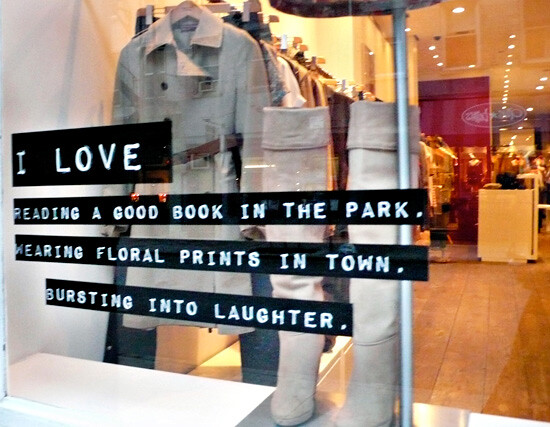

As Giorgio Agamben reminds us,
Arendt had already analyzed the process that brings homo laborans—and with it, biological life as such—gradually to occupy the very center of the political scene of modernity. … Arendt attributes the transformation and decadence of the political realm in modern societies to this very primacy of natural life over political action.14
We see this substitution at work in the highly evolved politics of contemporary consumer consciousness. The selection of consumer products increasingly demands to be taken seriously as a political act, asking us to produce a political self-portrait as we feed, clothe, and clean ourselves.
There is also something fundamental about the relation between gardening and this emerging biopolitics, between gardening and metaphors of rootedness and the uncomfortable displacements of modernity, the tearing away of deep, even unconscious connections to community and place. The urban farming movement, a corner of the artisanal fever that periodically grips artists’ communities, potently expresses a desire to return to a mythic, prelapsarian Eden of community and stability, of preindustrial, premediatic life, without the grit of urban disconnection but with the authenticity of Gemeinschaft restored. This appealing dream is expressed in the immortal refrain of Joni Mitchell’s song Woodstock of 1969, written about a historic event which career demands had prevented her from attending:
We are stardust.
We are golden.
And we’ve got to get ourselves back to the garden.
Here the garden is the part of the post-suburban Imaginary that governed the transition of the urban economy from industrial manufacturing to a high-end residential and commercial base. If we can imagine each of the distinctive urban spaces—industrial, residential, commercial—as manifesting a certain politics, we can understand not only the cultural trends that have followed in their wake but also the wider characterization of neoliberal consumer capitalism as an “experience economy.”
As the vibrancy of interclass contention has been quelled by the damping off of working-class politics, a sanitized version of an industrial urban experience (or some image of one) can be marketed to the incoming middle class, who have the means and the willingness to pay for what was formerly a set of indigenous strategies of survival, of a way of life. The rooftop evacuated by the laundry lines and the pigeon loft becomes an urban farm, trailing clouds of glory.
The new Imaginary of New York City, like so many others’, is no longer a concrete jungle but a cultivated garden, a place in which a gardener controls the noxious weeds and plants and directs growth in marvelous and pious ways. Lest I be taken for a romantic crank—or just an old bohemian like Samuel Delany memorializing the days when Times Square was simply The Deuce—I want to remind the reader that, if nothing else, as a female city-dweller I appreciate the newfound feeling of probable safety in the streets, especially after dark; but it is important to discern (as Delany would wish us to) the terms of this exchange.
2. In the Service of Experiences
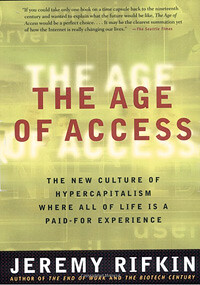

George Yúdice cites Jeremy Rifkin’s article from 2000, “Age of Access: The New Culture of Hypercapitalism Where All of Life Is a Paid-for Experience,” describing the “selling and buying of human experiences” in “themed cities, common-interest developments, entertainment destination centers, shopping malls, global tourism, fashion, cuisine, professional sports and games, film, television, virtual world and [other] simulated experiences.”15 Rifkin observes:
If the industrial era nourished our physical being, the Age of Access feeds our mental, emotional, and spiritual being. While controlling the exchange of goods characterized the age just passing, controlling the exchange of concepts characterizes the new age coming. In the twenty-first century, institutions increasingly trade in ideas, and people, in turn, increasingly buy access to those ideas and the physical embodiments in which they are contained.16
One effect of this search for meaningful—or authentic—experience is the highlighting of authenticity as nothing more nor less than the currency of the experience economy. We should not be surprised to find a business/motivational book entitled Authenticity, with the subtitle “What Consumers Really Want.” Written by Joseph Pine II and James H. Gilmore, consultants living in the small city of Aurora, Ohio, the book is the successor to their previous book, The Experience Economy: Work Is Theatre & Every Business a Stage, of 1999.17 These and similar books are guides not just to the creation of spectacles but for rethinking all business activity as gerundive, providing those fantastic, perhaps transformative, experiences we all supposedly seek, on the Disneyland model. Urbanism itself becomes fertile ground for precisely these transformations. (Zukin’s Naked City: The Death and Life of Authentic Urban Places illustrates this thesis through considering three signal New York neighborhoods.)
The fraying of traditional ties evident in the preferences and behaviors of the creative class also points to the tendency to form identifications based on consumerist, often ephemeral, choices. Taste in lifestyle choices with no political commitment has hollowed out the meaningfulness of taste—in art, music, furniture, clothing, food, schools, neighborhoods, vacation spots, leisure activities, friends—as a clear-cut indicator of the individual’s moral worth (of the individual’s “cultivation,” to use an old-fashioned construct, drawn from gardening). (This is one more reason why it is impossible to base a serious contemporary aesthetics on those of Kant, for whom the faculty of taste could not be more clearly separated from the “possessive individualism” that marks contemporary consumer choices. Kant, you may recall, in The Critique of Aesthetic Judgment, developed a tripartite system in which taste is clearly demarcated from both reason and the urge to possess, or the “pornographic.”) Taste now seems to be a sign of group membership with little resonance as a personal choice beyond a certain compass of selecting which token of the requisite type to acquire; perhaps that is why David Brooks (ever a keen observer of telling details while remaining completely incapable of seeing the big picture), recognized that for the creative class, choices must be understood as virtuous. (That individual choices are made on the basis of preferences already exhibited by a group is not completely new, since members of every group and tribe are instantly identifiable from the top of the head to the bottom of the feet, but the present context seems different, centering more on consumer acuity than on quality.) But virtue is not to be exhibited as virtuousness but rather as dictated by some external force other than religion, such as ecological awareness or putative health effects. Public institutions, and even royalty, have tried to become one with the people, exhibiting the same sentimentality through the public display of grief, joy, and family pride. Websites follow the example of Facebook, with portrait photos of even distinguished professors and public officials; smaller art institutions show us their staff members (mostly the women) proudly hugging their offspring or (mostly the men) their dogs.
In general, art institutions, particularly those smaller ones that used to form part of the alternative movement, have furthermore married the provision of experiences to the culture of celebration by turning up their noses at seriousness and critique, as reviewers, if not critics, have as well.18 We can see the rhetoric, often vividly expressed, of service, on the one hand, and fun experiences, on the other, among smaller art institutions and initiatives. I offer a few excerpted examples, mostly from email announcements. They span the spectrum of contemporary exhibition venues from small, artist-run spaces, to larger, more established organizations to the self-branding of cities. There are several core concepts that provide the rhetorical touchstones in these self-descriptions. On the fun side, these range from cross-fertilization in disparate “creative” user-friendly fields to an array of anti-puritanical hooks that touch on energetic pleasure in love, dancing, or whatever, and, on the service side, to bringing culture to the lower classes, helping heal the traumas of deindustrialization, and covering over the catastrophes of war.
My first example is an outlier: a public relations and events management company for “cultural projects” in New York and Milan, called Contaminate NYC, announcing a solo cartoon and manga show at a place called ContestaRockHair, described as:
a brand created in 1996 by a group of hairstylists who shared the passion for fashion characterized by a rock soul that links music and art with the creation of hair styles, fostering innovation and experimentation. Today ContestaRockHair counts 11 salons in Rome, Florence, New York, Miami, and Shanghai.19
One venerable New York artist-run institution, now positioning itself as a discursive space as well as an exhibition venue, has “partnered” with a boutique hotel in strange ways and touts the “Peace, Love & Room Service Package,” from which it receives a small percentage. Another 1970s New York nonprofit (listing a hotel and six other public and private funders), expresses its “passionate belief in the power of art to create inspiring personal experiences as well as foster social progress.” In the economically depressed 1970s, its earliest programs “invigorated vacant storefronts.” This strategy, in which property developers rely on artists to render the empty less so, has today become formulaic and ubiquitous in the US and beyond, making the connection between art’s appearance on the scene and the revaluing of real estate embarrassingly obvious.
Two further representatives of this trend strike a more sober note. The first is also from New York: this relatively new group’s “core mission is to revitalize … areas … by bringing thoughtful, high-caliber art installations … to the public….” A recent show in the formerly industrial zone, now “artists’ district,” of Dumbo uses construction materials crafted into “visual oxymorons that shift function and meaning in highly poetic ways.”
The second, a dockside location in southern Europe, listing a dozen corporate and municipal partners and sponsors, “targets the need to rehabilitate and revitalize urban spaces, without losing their identity or altering their nature….” By “taking into consideration the location of the project” in the docks, the art space
aims to expand art into non-traditional spaces and promote the use of places that previously lacked museum-like characteristics. … Without culture, societies cannot have a true civic consciousness.
Berlin is experienced in the framing discourses of creative-industry gentrification, especially after a 2007 report in Der Spiegel rated it as Germany’s top “creative class city,” based on Richard Florida’s “3T” indices: Talent, Technology, and Tolerance.20 So far, Berlin has been slow to embrace becoming “the hippest down-to-earth booming urban spot for the creative industries,” as described by the Berlin MEA Brand Building, advertising itself as “dedicated to luxury, fashion, art, cosmetics and accessoires [sic].” A Wall Street Journal article of 2010 mocks artists’ and bohemians’ unhappiness over the arrival of Soho House, one of a string of “ultra-hip private social clubs” because many Berliners, “proud and protective of their anarchic, gritty brand of cool,” are “stubbornly wary of gentrification symbols.” Berlin’s Soho House is in a former Jewish-owned department store turned Hitler Youth headquarters turned East German Communist Party building, a history that fuels people’s indignation over the arrival in town of a members-only club.21
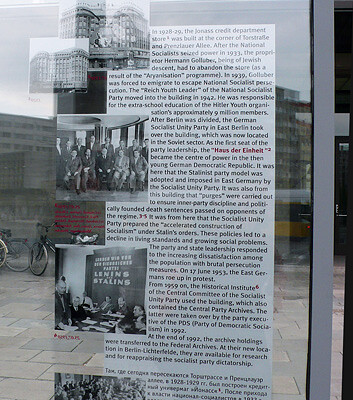

As it once did in the repurposing of German real estate contaminated by recent world history, the transformation of cities newer to the conquest of urban space can raise the eyebrows of those to whom such things may matter. The New York Times, writing of the Podgorze district in Krakow, Poland, an infamous Jewish ghetto under the Nazis that was subsequently commercially orphaned in the postwar years, gushes about new restaurants springing up alongside “an ambitious history museum in the renovated [Oskar] Schindler Factory” and other promised museums nearby. “The award for prettiest real estate goes to Galeria Starmach, one of the most celebrated contemporary art galleries in Poland … an airy white space in a red brick former synagogue.”22
But keep smiling! Mourning is consigned to new art-like spaces, such as complex architect- or artist-designed sculptural memorials and other secular pilgrimage shrines, such as museums of remembrance. In other words, those who wish to engage in mourning are directed there rather than to actual religious structures or to more general-purpose museums. Meanwhile, those established museums wish to make themselves seem less like mausoleums and grand palaces and more like parks and gardens, going beyond the typical decor of the past, of vast floral lobby vases and discreet landscaping, toward pavilions and bamboo structures produced by a host of artists or journeyman architects in museum backyards and on their roofs. This happy-face effort is but a short step beyond their efforts to justify their right to funds from skeptical municipalities and donors by attracting, through various programs administered by education departments, visitors from outside their normal ambit, thereby assuming not only the role of service provider but that of a pedagogical institution (often one pitched to lower grade levels).23 No longer permitted to take the old-fashioned view and to see themselves as a locus of individualized contemplation of worthy aesthetic objects, museums have increasingly taken responsibility for the entirety of visitors’ experiences, shepherding them from the shop to the art works, with their enfolding printed and recorded and virtual texts, to the café, while also beckoning to those formerly excluded population groups and informing them about the manifold rewards that museum-going might offer them.


3. Detroit: I Do Mind Dying
Detroit is a city imagined by some as an urban wasteland reverting back to prairie. Over the past twenty-plus years, many projects have tried to engage with Detroit’s long slide from an iconic metropolitan vanguard of the eponymous Fordist assembly-line production to a severely distressed relic. As the fastest-shrinking metropolis in the US (it is at its lowest point in 100 years, having dropped from the fourth largest in 1950 to the eleventh in 2009 and losing a quarter of its population in the interim) and long past hoping for salvation from its Renaissance Center, postindustrial Detroit is presently trying to school its residents on how to grow small gracefully.24 The city has been shrinking for a long time, as suburban, mostly white, flight took hold from the 1950s onward and as the auto industry ceased to be the mighty backbone of the US economy, dispersing its production to low-wage locales in the US and elsewhere and greatly reducing its employee ranks.25 Detroit’s history as the quintessentially Fordist industrial city (Ford is the carmaker that pioneered the moving assembly line) is worth considering. Not only is its history of worker organizing and union struggles long and distinguished, the city government also had a number of socialists for a good amount of time, until their support base disappeared and city government was beset by corrupt politicians. The infamous Detroit riot (some would say uprising) of 1967, while rooted in the inequalities of race, nevertheless included some racial solidarity.26
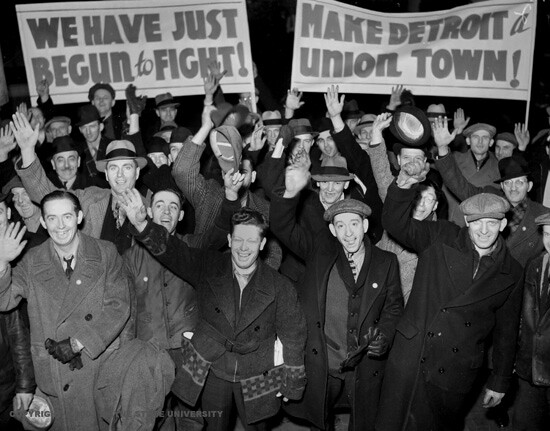

Detroit has a long and distinguished cultural history as well, most prominently in music—jazz, classical music performance, R&B, and more recently, the Motown sound, hip-hop, and Detroit Techno.27 But the elite, publicly supported mainstream institutions, including the venerable Detroit Institute of the Arts, the Detroit Opera House (home of the Michigan Opera Theatre), and the world-famous Detroit Symphony, are struggling for audiences and support; this year, the Symphony’s musicians, after a contentious six-month strike and the cancellation of 75 percent of the season, accepted a 23 percent pay cut, and the Opera House now holds a megachurch service every Sunday.
As the locale of a new television cop show, Detroit is the very image of post-Fordist urban abjection.28 Written off the register of civilized America, suffering from dreadful crime statistics, inadequate policing, and municipal corruption, the city has recently called forth unbidden an extravaganza of projects attempting to establish the authentic street cred of both parachuting artists and local activists. As in the case of New Orleans, some cool people are presently moving in—people who fit under the rubric “creative class.” Some of the renewed interest in Detroit stems from an analysis of the city as both the model failure of (urban) capitalism and a fertile ground for the seeds of the future. Some other observers seem to revel in the opportunity to pick over the ruins in a kind of extended rubbernecking, but with the sometimes-unspecified hope that the outcome takes place in the vicinity of the art world.29 Others still seem interested in pedagogical opportunities, whether for themselves or others. As is the case everywhere, many new arrivals are looking for cheap rent, for places to live and work comfortably, as Richard Florida has noticed; as Florida also tells us, where hipsters go, restaurants are sure to follow. The New York Times asks, “How much good can a restaurant do?” and reassures us that
in this city, a much-heralded emblem of industrial-age decline, and home to a cripplingly bad economy, a troubled school system, racial segregation and sometimes unheeded crime, there is one place where most everyone—black, white, poor, rich, urban, not—will invariably recommend you eat: Slows Bar B Q.30
Opened in 2005, the restaurant has, according to its owner, artist and real estate scion Phillip Coller, “validated the idea that people will come into the city.” The reporter comments, “Anywhere but Detroit, the notion that people will show up and pay money for barbecue and beer would not be seen as revolutionary.”31
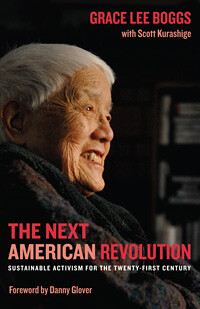

Detroit is home to many worthwhile public and community projects off the art world radar, such as the long-standing urban farming movement partly spearheaded by beloved radical activist Grace Lee Boggs, now ninety-six years old.32 Boggs works with established communities of various income groups, using the collective growing, planting, and harvesting of crops and flowers as a basis for unity and civic mobilization, and as a way to draw in children; planting and harvesting remain a potent metaphor for self-application, communal effort, and the likelihood of a future. In a city like Detroit, neighborhood groups proliferate.
People have been making art about Detroit’s troubles for a long time, especially through the media of photography and film: see for example, Newsreel’s Finally Got the News (1970) and Michael Moore’s Roger and Me (1989).33 Camilo José Vergara, sociologist, photographer, and cogent chronicler of the ills of US cities from the 1980s on, photographed and wrote about Detroit.34 In the 1980s, the local group Urban Center for Photography outraged officials and city boosters by turning a grant they had received into a public project called Demolished by Neglect, which included posting enlarged photos of burned-out homes and decrepit theaters and other grand spaces on outdoor sites.35
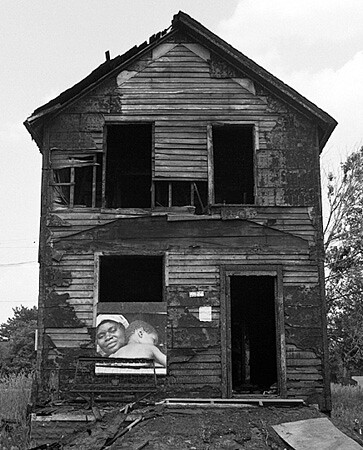

Detroit is the site of artist-NGO do-gooder projects in the sphere of urban relations, some worthy, some hardly so. In the past few months I have met artists from around the world who have made the sad precincts of Detroit and environs their subject. Some of the projects rest comfortably within the tradition of salvage anthropology, such as the Canadian artist Monika Berenyi’s project archiving the poetry of the 1960s and 1970s Detroit through the Detroit City Poetry Project: An Oral History.36 Several Detroit projects have taken place in New York or have been instituted by New York–based artists. In 2009 a small nonprofit on New York’s Lower East Side held a show called “Art of the Crash: Art Created from the Detritus of Detroit.”37 Another project, Ice House Detroit, by an architect and a photographer based in Brooklyn (though the photographer was born in Detroit), consisted of laboriously (and expensively, it turns out) spraying one of Detroit’s countless abandoned houses with water in the dead of winter to make it visible and undeniably aesthetic.38 Back in New York, a young artist having a solo show at the Museum of Modern Art last year showed her symbolic set of photo panels entitled Detroit. “The thing you have to understand about Detroit is that ruin is pervasive. It’s not like it’s relegated to one part of town… It’s everywhere.” The artist (who has also visited New Orleans) “internalized all that decay, but she also uncovered hopeful signs of reinvention, like a group of artists turning an abandoned auto plant into studio spaces,” writes the New York Times.
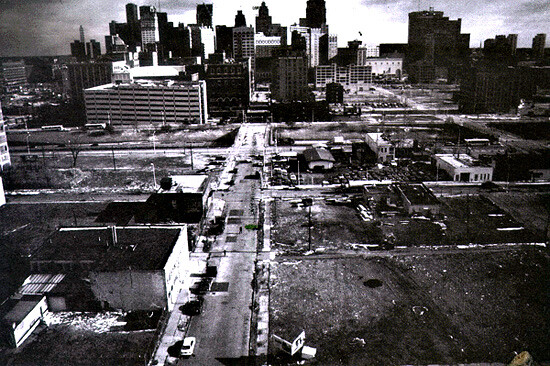

Alejandra Salinas and Aeron Bergman, artists based in Oslo, have been doing projects in Detroit (Bergman’s home town) for a decade in collaboration with institutions in Detroit and Oslo. They will be running an “artist/poet/scholar” residency called INCA: Institute for Neo-Connotative Action, out of a center-city apartment they own. Salinas and Bergman have made animated-text films based on audio recordings of local community and political activists (including Grace Lee Boggs) and on the history of DRUM, the Detroit chapter of the League of Revolutionary Black Workers, centered on the Newsreel film Finally Got the News.39
The Netherlands also sends art students to Detroit, but in much larger numbers and through regularized institutional channels, under the auspices of the Dutch Art Institute, in collaboration with the University of Michigan, an elite public university.40 The university has set up a Detroit center, accessible only to Ann Arbor–based students with swipe cards. Back in Ann Arbor, about an hour’s drive from Detroit, artist Danielle Abrams teaches a course called “Why Does Everyone in Ann Arbor Want to Make Work in Detroit?” During the 2010 Open Engagement conference sponsored by the Art and Social Practice program at Portland State University in Oregon, Abrams’s students explained that they didn’t go to Detroit to “fix it” but rather “to get to know the community: its history, its people, and movements”: “The city will teach you what you need to know.”41 Abrams’s students did not produce art projects but rather “research and community engagement.”
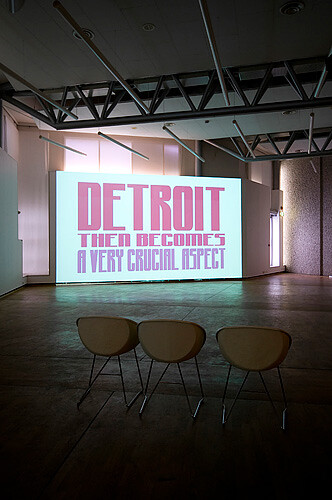

A pair of young Australian artists received funding from an Australia Council residency in Chicago to do a month-long project in Gary, Indiana, an industrial satellite of Detroit and similarly in ruins. In conjunction with the neighborhood activist group Central District Organizing Project they planted a community garden and painted an all-but-abandoned house with an absentee owner. They also recorded local interviews for a planned film interspersing the interviews with clips from the 1980s Hollywood movie The Wiz.42
The imperative toward a manifestation of social concern and respect, if not engagement, pervades most of the projects I have learned about. If some of this sounds like missionary social work in a third world city that is part of a first world nation—much like the Ninth Ward in post-Katrina New Orleans—other projects are, like the MoMA artist’s, framed in romantic, and sometimes futuristic terms (and what is futurism if not predicated on loss?). Let me invoke the motif of melancholy. Only through the act of mourning something as having been lost can the melancholic possess that which he or she may never have had; the contours of absence provide a kind of echo or relief of what is imagined lost, allowing it to be held. In this respect, most art-world projects centering on decaying places like Detroit are melancholic monuments to capital, in the sense of depicting both the devastation left in its absence but also the politics it provoked. Detroit was home not only to one of the great triumphs of capitalist manufacturing but also to one of the great compromises between capital and labor. To be upper middle class and melancholic about Detroit is to firmly fix one’s political responsibilities to a now absent past; mourning Detroit is a gesture that simultaneously evidences one’s social conscience and testifies to its absolute impotence. (Looking at Detroit also helpfully eases the vexed question of one’s effect on one’s own neighborhood in another city somewhere else.)
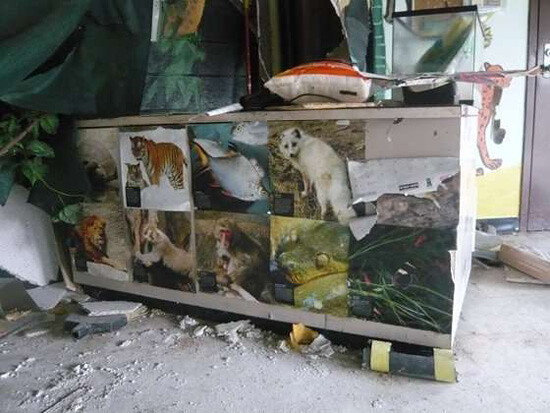

Such melancholia has nourished a post-apocalyptic futurism. A recent exhibition at Casco, the public design space in Utrecht, by a London-based graphic designer and a Detroit filmmaker, seeks “to imagine a post-capitalist city,” focusing on Detroit’s abandoned zoo, “not simply to witness the failure of a civilization in its state of ruin, but to encounter an abundant eco-system of flora and fauna that has since evolved there.”43 An associated lecture by a Scottish-born, Detroit-based professor of urban studies argued that Detroit is a place “where a model of open spaces or, to use a term that comes up a lot here in Detroit, the urban prairie, starts to come into play.”44 (The architect of the Ice House project had similarly told Dwell magazine that “Detroit is a place with a lot of potential at the moment, and there are a lot of individuals there working on innovative projects, such as the re-prairie-ization of inner city Detroit, urban farming, materials reuse and redistribution, densification of certain areas, and widespread architectural reuse.”45)
The decidedly local Heidelberg Project, Tyree Guyton’s 25-year effort of decorating house exteriors in an impoverished neighborhood centering on Detroit’s Heidelberg Street, fits into the “outsider art” category. Unlike, say, the initiative of artist-mayor Edi Rama of Tirana to paint the downtown buildings of this destitute city in bright colors, captured by the Albanian-born artist Anri Sala in Dammi i colori, Guyton’s project has not had a high level of art-world or municipal traction.46 A group of Detroit-based artists going by the name Object Orange, however, achieved a brief moment of attention in 2006/2007 when they painted abandoned buildings in Disney’s “Tiggerific Orange” color, hoping, they finally decided, to have the city tear them down and reduce the blight and danger they posed.47


I mention these projects on Detroit not to praise or to criticize them in particular but because they represent a movement within art, and architecture, to institute projects in the larger community, in the built environment or in reference to it, surely as part of the “go social,” community-oriented imperative. Is it troublesome that such works stand in contradistinction, implicit or explicit, to “political art,” to work directly concerned with access to power? Here it is helpful to invoke New York urban theorist Marshall Berman’s phrase, the “collision between abstract capitalist space and concrete human place.” Community groups, and community artists, are tied to a concrete locale and thus cannot stand up to those in command of capital, which is defined by its mobility. But even more, community groups are composed of members tied to each other, whereas itinerant artists remain always on the outside, functioning as participant observers, anthropology style. Some, like Harrell Fletcher (or, earlier, filmmakers Nettie Wild and Beni Matias), have found communities where they expected only to do a project and leave, but have instead moved in.48
In other cities, such as Barcelona, generally presented as a model of humanistic redevelopment, driven by the relentless push of municipal “renewal,” but also notable for its “push back” of local housing initiatives, young activist students work on resistance and reformation campaigns within working-class communities under pressure of gentrification, adding some visibility and perhaps organizational strength to local neighborhood groups. Detroit has no such worries.
4. Public Practice, Social Practice
I do not know whether to be more pleased or apprehensive about art-world artists engaging in, as the sign on the door says, “social practice.” Certainly these essays into the world beyond the art world, which can include any of a spate of pedagogical projects in ordinary communities, feed the instincts of a sector of artists, a sector constantly reborn, to do something “real.” It is worth noting, following Mierle Ukeles, the replacement of the term public art by social practice.49 The emphasis on personal qualities and social networks will most likely give rise to projects that center on the affective. I have rehearsed some of the difficulties of these efforts. I have also alluded, throughout this essay, to the relatively easy co-optation of artists as an urban group in cities that simply allow us to live and work in ways we find conducive to our concerns—a pacification made easier by the expansion of the definition of the artist and the advancing professionalization of the field. Baby steps in the formation of community initiatives are treated as deserving of the moral (and professional) equivalent of merit badges, for a generation raised on images and virtual communication and lacking a sufficient grasp of the sustained commitment required for community immersion. These projects can capture the attention of journalists and municipal authorities, all speaking the same language and operating against a backdrop of shared class understandings. (This is precisely the situation Sharon Zukin described in Loft Living, which, we should recall, is a case study, using Manhattan’s Soho neighborhood, of the transformation of undervalued urban space into highly valuable real estate, a condition revisited in the more recent Naked City, in order to address the process at a far more advanced stage along that course.50) But it renders invisible the patient organizing and agitating, often decades long, by members of the local communities (a process I witnessed first-hand in Greenpoint, Brooklyn).
My concerns start here but extend a bit further, to the desire of young artists, now quite apparent in the US, to “succeed.” Success is measured not especially in terms of the assessments of the communities “served,” though that may be integral to the works, but through the effects within the professional art world to which these projects are reported. Success, to those whom I’ve asked, seems to mean both fame and fortune in the professional ambit. I am not alone in my disquiet over the fact that this particular rabbit seems to be sliding inside the boa, as “public practice” is increasingly smiled upon by the art world, particularly in those demonstration extravaganzas called biennials, which appear to reside in cities but whose globalized projects can in fact be easily disclaimed as one-off experiments.51
One problem with my critique of Richard Florida’s thesis stems from the insufficiency of simply pointing out the obfuscatory conflation of the category “artist” with the larger economic group he has called “the creative class,” for artists increasingly have come to adopt the latter’s entrepreneurial strategies. Witness only the increasingly common tactic of raising project money through social media and related sites such as Kickstarter or PitchEngine, in which the appeal to an audience beyond the professional is often couched in the language of promotion. Like resume writing, now strongly infused with a public-relations mentality, the offerings are larded with inflated claims and the heavy use of superlatives.52 One should refer here to the manifold and repeated discussions of the artist as flexible personality in the post-Fordist world, forced to “sell” oneself in numerous protean discourses; a literature that encompasses such writers as Brian Holmes and Paolo Virno (I have briefly cited this literature in an earlier essay, in relation to the questions of the political and critical art53). Paolo Virno writes:
The pianist and the dancer stand precariously balanced on a watershed that divides two antithetical destinies: on the one hand, they may become examples of “wage-labour that is not at the same time productive labour”; on the other, they have a quality that is suggestive of political action. Their nature is essentially amphibian. So far, however, each of the potential developments inherent in the figure of the performing artist—poiesis or praxis, Work or Action—seems to exclude its opposite.54
The alienation this creates is so all-pervasive that although the alienation of labor was a much-studied topic in mid twentieth century, the condition has settled like a miasma over all of us and has disappeared as a topic. At the same time, while some artists are once again occupied with the nature of labor and the role of artists in social transformation, Continental theorists have for most of the past century looked at social transformation through the prism of art and culture. The focus on culture itself as a means of critiquing and perhaps superseding class rule has a long lineage. Perry Anderson has pointed out that Marxism on the whole was inhibited from dealing with economic and political problems from the 1920s on, and when questions concerning the surmounting of capitalism turned to superstructural matters, theorists did not, as might be expected, concentrate on questions of the state or on law, but on culture.55
While public practices are entered into the roster of practices legible within the art world, they are entered as well into the creative-class thesis, in which they will, along with the much larger group of knowledge-industry workers, transform cities, not by entering into transformative political struggle but rather to serve as unwitting assistants to upper-class rule.


Two near-simultaneous New York City initiatives, occurring as I write, provide insight on the way this plays out, the first from the artists’ vantage point, the second from the point of view of the powers-that-be. An ambitious conference, at a not-for-profit Brooklyn gallery describing itself as “committed to organizing shows that are critically, socially, and aesthetically aware,” is announced as follows: “In recent years many artists have begun to work in non-art contexts, pushing the limits of their creative practice to help solve social problems.” Offerings range from presentations on “artists embedded in the government, industries, and electoral politics” to those operating beyond the cash economy. The announcement further elucidates:
[W]e hope to further the possibilities for artists to participate in the development of social policy. Artists, art historians, museum professionals, academics, policy experts and government officials will consider how the art making process can contribute to social change as well as encourage elected officials, community leaders and the general public to think of artists as potential partners in a variety of circumstances.
In direct counterpoint is the Festival of Ideas for the New City, in Manhattan, initiated by the New Museum and sponsored by Goldman Sachs, American Express, Audi, The Rockefeller Foundation, and New York magazine, among others, and with thanks to local businesses, socialites, and a clutch of New York City commissioners:
[This festival], a major new collaborative initiative … involving scores of Downtown organizations, from universities to arts institutions and community groups, working together to effect change … will harness the power of the creative community to imagine the future city … . The Festival will serve as a platform for artists, writers, architects, engineers, designers, urban farmers, planners, and thought leaders to exchange ideas, propose solutions, and invite the public to participate.
It comprises a conference, the inevitable street festival, and “over one hundred independent projects and public events.”56 The conference proper is described (in the inflated vocabulary that we have seen some smaller institutions also adopt) as including:
visionaries and leaders—including exemplary mayors, forecasters, architects, artists, economists, and technology experts—addressing the Festival themes: The Heterogeneous City; The Networked City; The Reconfigured City; and The Sustainable City.
These two events suggest the two registers of public projects, of the creatives remaking the urban world, which only appear to be following the same script. While artists look for the messianic or the merely helpful moment, aiming for “social change,” the institutional production is centered on various trendy formulas for the “future city.” (Yet the institutional event has secured the participation of most of lower Manhattan and Brooklyn’s project and nonprofit spaces—including some of those whose press releases figured in the present essay—no doubt figuring that they can hardly afford to take a pass.)
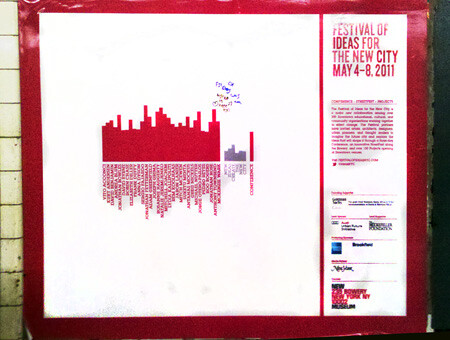

For the business and urban planning communities, culture is not a social good but an instrumentalized “strategic cultural asset.” Consultant and former UK professor of urban policy Colin Mercer writes of the “strategic significance of intellectual property-based cultural and creative (content) industries in urban business communities” that can “work in partnership and synergy with existing/traditional businesses to enhance footfall, offer, branding and opportunity for consumption and diversity of experience.”57 Mercer notes that the characteristics of urban life that formerly drove people to the suburbs—such as diversity and density, on the one hand, and, on the other, vacant old factories and warehouses considered “negative location factors in the old economy”—are “potentially positive factors in the new economy because they are attractive to those [the “knowledge-based workers of the new economy”] who bring with them the potential for economic growth.”58
Mercer’s paper is, of course, a reading of Florida’s thesis; he writes:
This is not an “arts advocate” making the argument. It is an urban and regional economist from Carnegie Mellon University whose work has become very influential for urban and regional policy and planning in North America, Europe and Asia … because he has recognised something distinctive about the contemporary make up of successful, innovative and creative cities which … take account of … what he calls the “creative class.”59
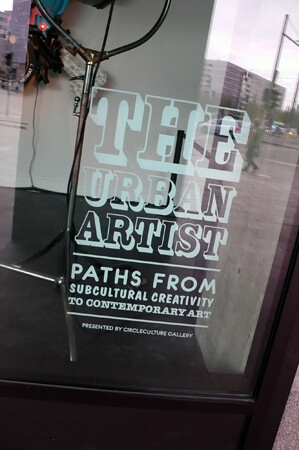

Indeed. Florida’s paradigm is useful for cities—especially “second tier” cities, if Alan Blum is correct—looking to create a brand and publicity for the purposes of attracting both capital and labor (the right kind of labor, for service workers will come of their own accord). As I suggested in an earlier installment, it is of little importance whether the theory pans out empirically, since it serves as a ticket of entry to renewed discourses of urban transformation. If and when it has outlived its use, another promotional package, complete with facts and figures, will succeed it, much as Florida’s urban conversation has largely replaced the more ominous “zero tolerance” and “broken windows” theories of the problematics of urban governance—a replacement that has been necessitated by lower crime statistics and perhaps from the success of evacuating or depoliticizing poor and working class residents. I am more concerned with the point of view of the broadly defined creative classes, especially of artists and other “cultural workers,” although I remind myself that immaterial and flexible labor link the creatives and those implicitly deemed uncreatives, which in the US seems to have led to a wholesale standing down from organization and militancy.
But, from a policy point of view, as UK urbanist Max Nathan remarks,
Everywhere, culture and creativity improve the quality of life; iconic buildings and good public spaces can help places reposition and rebrand. But most cities—large and small—would be better off starting elsewhere: growing the economic base; sharpening skills, connectivity and access to markets; ensuring local people can access new opportunities, and improving key public services… .60
Let me, briefly, take this discussion back to Henri Lefebvre. Lefebvre, as I noted at the start of this essay, in Part I, had posited that the urban represented a qualitatively new stage in the evolution of society, from agrarian, to industrial, to urban. Thus, he reasoned, future mobilizations against capitalism would have an urban character. This troubled Manuel Castells, who, writing as a structuralist following Althusser, preferred to focus on the ideological function of the city—its role in securing the reproduction of relations of production—rather than approaching the city as an essentially new space, one, moreover, that might be construed as endowed with quasi-metaphysical features for the production of both alienation and emancipation. As urban theorist Andy Merrifield writes:
While the city, in Lefebvre’s dialectic, functioned for capitalism, it actually threatened capitalism more; now, in Castells’s dialectic, while the city threatened capitalism, it somehow had become more functional for capitalism. Indeed, the city, Castells writes, had become the “spatial specificity of the processes of reproduction of labor-power and of the processes of reproduction of the means of production.”61
The relative clarity of European class politics could allow Castells to write that Gaullist attempts at urban renewal were
aimed at left-wing and in particular Communist sectors of the electorate. … Changing this population means changing the political tendency of the sector … . Urban renewal is strong where the electoral tradition of the parliamentary “majority” is weak.62
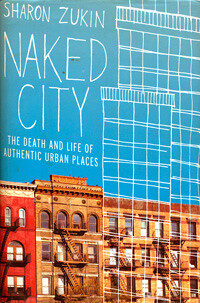

Zukin’s interpretation of urban events is similar but tailored to American conditions. The weak and often antagonistic relation of the US student movement, through the 1960s and 70s, to working class life and culture helped produce a politics of cultural resistance in the newly developing “creative class” that was cut off, culturally, physically, and existentially, from traditional forms of urban working class organization. Although artists, flexible service workers, and “creatives” more generally may not be the source of capital accumulation, it is inarguable that the rising value of the built environment depends on their pacification of the city, while the severing of relations to class history—even of one’s own family in many instances—has produced at best a blindness, and at worst an objectively antagonistic relation, to the actual character of urban traditions of life and of struggle. What often remains is a nostalgic and romanticized version of city life in which labor is misperceived as little more than a covert service function, for the production of “artisanal” goods, for example, and the creation of spaces of production and consumption alike (manufacturing lofts, workshops, bars, taverns, greasy spoons, barbershops) obscured by a nostalgic haze.
5. Artists Seeking Inspiration—Or Consolation
Anthropologist David Graeber writes with some bemusement on a conference of several central figures in Italian “post-workerist” theory—Maurizio Lazzarato, Toni Negri, Bifo Berardi, and Judith Revel—held at the Tate Modern in London in January 2008. Graeber professes to be astonished that neither the speakers nor the organizers have any relation to art, or even much to say about it (except for a few historical references), although the event was sponsored by a museum and the hall was packed. He calls his review “The Sadness of Post-Workerism, or Art and Immaterial Labour Conference,” because of what he describes as a general feeling of gloom on the part of speakers, traceable primarily to Bifo, who at that moment had decided that “all was lost.”63 Graeber seems to find a certain congruence with the perpetual crisis of the art world and the difficulties of post-Fordist theorizing, especially since he finds Lazzarato’s concept of immaterial labor to be risible. He decides that the artists present have invited the speakers to perform as prophets, to tell them where they are in this undoubted historical rupture—which Graeber finds to be the perpetual state of the art world. However, he diagnoses the speakers as having, for that moment at least, decided that they too have lost the future.
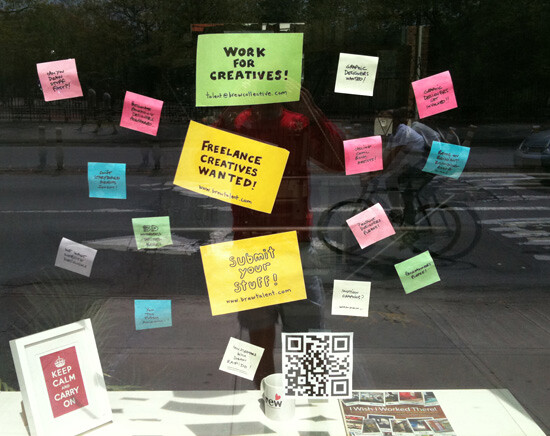

I am far from prepared to take this to mean that artists have lost the future. It is not of minor consequence that this sort of conference is a staple of the art world (Graeber probably knows this too). Philosophy fills in for previous sources of inspiration, from theology and patrons’ preferences to the varieties of scientific theorization or political revolution. A recent Swedish conference asks, “Is the artist a role-model for the contemporary, ‘post-Fordian’ worker—flexible, creative, adaptable and cheap—a creative entrepreneur? Or the other way around—a professionalized function within an advanced service economy?”64 A question perhaps worth asking, and which many, particularly European, critics and theorists, along with some artists, are inclined to ask. Here is something to consider: the cultural sphere, despite relentless co-optation by marketing, is a perpetual site of resistance and critique. Bohemian/romantic rejectionism, withdrawal into exile, utopianism, and ideals of reform are endemic to middle-class students, forming the basis of anti-bourgeois commitments—and not everyone grows out of it, despite the rise of fashion-driven (i.e. taste-driven) hipsterism. Sociologist Ann Markusen, in a kind of balance of Lloyd’s critique of the docile utility of bohemians as workers, reminds us that artists are overwhelmingly to the left on the political spectrum and engage at least sporadically in political agitation and participation.65
I am also not inclined to follow Debord or Duchamp and give up the terrain of art and culture. Certainly, celebration and lifestyle mania forestall critique; a primary emphasis on enjoyment, fun, or experience precludes the formation of a robust and exigent public discourse. But even ruckuses have their place as disruption and intervention; some may see them as being less self-interested than social projects but as full collective projects, while fun remains a term that refers to private experience. There is no reasonable prescription for how, and in what register, to engage with the present conditions of servitude and freedom.
Brian Holmes has likened the dance between institutions and artists to a game of Liar’s Poker.66 If the art world thinks the artist might be holding aces, they let him or her in, but if she turns out actually to have them—that is, to have living political content in the work—the artist is ejected. Although Chantal Mouffe exhorts artists (rightly, I suppose) not to abandon the museum—which I take to mean the art world proper—there is nothing to suggest we should not simultaneously occupy the terrain of the urban.
This essay is an expanded version of a talk given at the third Hermes Lecture at Provinciehuis Den Bosch on November 14, 2010, arising from a suggestion by Camiel van Winkel to consider the work of Richard Florida. I thank Stephen Squibb for his invaluable and edifying assistance during the research and editing process and Brian Kuan Wood for his editing help and infinite patience. Thanks also to Alexander Alberro and Stephen Wright for their helpful responses to earlier drafts.
In the course of designing a city garden in Helsinki, I learned that city planners worried I would fail to distinguish the urban from the rural via the forms and types of planting. Finland has too much countryside for their liking, it appears.
Advanced societies in the twentieth century saw the apparent conquest of diseases associated with dirt and soil through improved sanitation and germ-fighting technologies. Fresh air movements against disease were important elements of urban reform, opening the way for renewed efforts to enlarge the playground already provided to the middle class and extended to the working class in the early part of the century.
Paris already had such a repurposed industrial rail line, the Promenade Plantée, whose transformation into a park began in the late 1980s.
Poultry keeping was banned in New York City in an effort to extirpate the remnants of the farms and farm-like practices that survived in far-flung corners of the city, such as Gravesend, Brooklyn, or Staten Island. New York City, like virtually every municipality, has detailed laws on the keeping of animals, whether classed as pets, companions, or livestock, including those held for slaughter. Pets were a matter of contention, banned from middle- and working-class apartment buildings, until the 1960s. Animals classified as wild are banned—the category “wild animals” defines the uncivilized zošsphere; ergo, people who keep them are not “virtuous” but decadent or “sick.” New Yorkers may recall the incident a decade ago in which Mayor Giuliani, a suburbanite longing to join the ranks of the cosmopolitan, hurled personal insults (prominently and repeatedly, mentioning “an excessive concern with little weasels”) at a caller to his weekly radio program who wanted ferrets to be legalized as household pets. The call, from David Guthartz of the New York Ferrets’ Rights Advocacy, prompted a famous three-minute tirade in which Giuliani opined, “There’s something deranged about you. The excessive concern that you have for ferrets is something you should examine with a therapist, not with me.” See →.
See →.
Here one is tempted to offer a footnote to Lefebvre’s mid-century observations on the urban frame (see Martha Rosler, “Culture Class: Art, Creativity, Urbanism, Part I: Art and Urbanism, e-flux journal, Issue 21, →), to take account of the blowback onto the urban paradigm of the neoliberal attributes of exurbia that we have classed under the rubric of suburbanization. As neoliberalism takes hold, even long-standing democratic processes of public decision-making, such as town meetings that obtained in small towns, succumb. As to the question of aristocracy, the figure of the aristocrat—especially the one in ratty old furs and drafty mansions—has haunted discussions of the art world, for artists are still disproportionally influential for the culture at large, while some reap handsome financial gain from this excursion and others simply stand around.
J. Eric Oliver, Democracy in Suburbia (Princeton: Princeton University Press, 2001). Rather than town meetings, one more typically finds the retreat to the backyard and the country club.
The work was installed in 1981, having been commissioned by the Art-in-Architecture Percent for Art Program, under the auspices of the federal General Services Administration, which also oversaw its removal. The event is interesting because it called upon a probably manufactured split between “the ordinary public” (the victims of the art) and the pitiless elite sectors of the art world—manufactured because the campaign for the removal of the work was in fact spurred by an aggrieved judge, Edward Re, of the arcane United States Customs Court. The following literature on Tilted Arc may be useful: Janet Zweig, Notes and Comments column, New Yorker (Mar. 27, 1989); Harriet F. Senie, Tilted Arc Controversy: Dangerous Precedent? (Minneapolis: University of Minnesota Press, 2001); Gregg M. Horowitz, “Public Art/Public Space: The Spectacle of the Tilted Arc Controversy,” The Journal of Aesthetics and Art Criticism 54, 1 (Winter 1996) (“an early version of the strategy of censorship-as-liberation used by regressive political forces in other antidemocratic projects,” 8); and, by Serra’s wife, The Destruction of Tilted Arc: Documents, eds. Martha Buskirk and Clara Weyergraf-Serra,(Cambridge, MA: The MIT Press, 1990). For an immediate, partisan view, see the film The Trial of Tilted Arc (1986), centering on the hearings relating to the removal of the sculpture.
“The Gates is the largest artwork since the Sphinx,” begins a promo site’s appreciative article, see →. Mayor Bloomberg, a man known to tout the arts for their economic potential, inaugurated the work by dropping the first curtain. The artists call the fabric color “saffron,” a colorful and exotic food spice but not the orange of the work. A lovely article on children’s responses to the work—upper-middle class, upper class, and working class—includes the following: “Subsequent visits have somewhat altered her view. ‘I don’t like the look of them but I like the way everybody is at the park and happy,’ she said, making her the ideal experiencer of the work.” Julie Salomon, “Young Critics See ‘The Gates’ and Offer Their Reviews: Mixed,” New York Times, February 17, 2005. See →.
See Sharon Zukin, Naked City: The Death and Life of Authentic Urban Places (New York: Oxford University Press, 2010)., discussed in part II of this essay.
A further consideration of this project and its municipally sanctioned follow-up, Olafur Eliasson’s Waterfalls (2008), would have to point to the insistence of these projects on the power of the artist, and his grant-getting, fund-raising, and bureaucracy-besting prowess, with urbanized nature as the ground. In other words, the intellectual labor of the artist is disclosed to cognoscenti but the spectacle suffices for the masses. This problem was partly addressed by Eliasson in a radio interview describing the scaffolding of the Waterfalls as an homage to (manual) labor, a theme not otherwise much noted in his work.
Georg Simmel, “The Metropolis and Mental Life,” in The Sociology of Georg Simmel ed. Kurt Wolff (Glencoe, Il: Free Press of Glencoe, 1950). Originally published as Die Großstadt und das Geistesleben (Dresden: Petermann, 1903).
Here consider the relationship between street fashion, working class attire, and middle-class envy of these. In addition, before youth-culture demands in the 1960s loosened most dress codes (prompting outraged businesses to post notices announcing “No Shoes, No Shirt, No Service”), it was illegal to wear “short shorts” and other forms of skimpy dress on New York City streets.
Giorgio Agamben, Homo Sacer: Sovereign Power and Bare Life (Stanford: Stanford University Press, 1998), 3–4.
Quoted in Yúdice, The Expediency of Culture: Uses of Culture in the Global Era (Durham: Duke University Press, 2003), 196. (See Part II of the present article.) Jeremy Rifkin subsequently published a book with the same title as his article. See Jeremy Rifkin, Age of Access: The New Culture of Hypercapitalism Where All of Life Is a Paid-for Experience (New York: Tarcher, 2000).
Rifkin, Age of Access, 54.
Joseph Pine II and James H. Gilmore, Authenticity: What Consumers Really Want (Boston: Harvard Business School Press, 2007) and The Experience Economy: Work Is Theatre & Every Business a Stage (Boston: Harvard Business School Press, 1999). Aurora is a tiny town of about 13,000 residents, in Northeastern Ohio, near Akron. Do visit Pine and Gilmore’s fun-loving website, →. Rifkin cites their first book: “Management consultants B. Joseph Pine and James Gilmore advise their corporate clients that ‘in the emerging Experience Economy, companies must realize they make memories, not goods,’” Age of Access, 145.
Two reviews, by two women reviewers, from one day’s New York Times Arts section make this point. They sharply contrast the old, “culture is serious business,” mode and the new, “culture ought to be fun” mode. A senior, front-page reviewer in “Cuddling with Little Girls, Dogs and Music,” writes skeptically about crowd-pleaser Yoshitomo Nara’s show, at the formerly staid Asia Society, that it “adds new wrinkles to the continuing attempts by today’s museums to attract wider, younger audiences, and the growing emphasis on viewer participation.” A few pages on, in “A Raucous Reflection on Identity: Jewish and Feminine,” a junior reviewer writes, “Don’t be put off by the yawn-inducing title of the Jewish Museum’s ‘Shifting the Gaze: Painting and Feminism.’ The show is a puckish, punchy look at the women’s art movement (that draws) inspiration from Marcia Tucker’s ‘Bad Girls’ survey of 1994.” There is nothing particularly raucous in the works she describes. See → and →. The art journalist Jerry Saltz, based at a local publication, earlier demonstrated his lack of recognition of the atmosphere of exclusivity, high seriousness, and sobriety typically projected by high-art institutions (definitively analyzed by Pierre Bourdieu) by wondering in print why people do not visit galleries even though they do not charge admission. The need to abrogate this forbidding atmosphere is not what is at issue here, but the emphasis upon “the museum experience,” or experiences, represents a new management imperative.
See →.
See →.
Vanessa Fuhrmans, “Berlin Broods over a Glitz Invasion,” Wall Street Journal, August 20, 2010. See →.
Rachel B. Doyle, “Krakow: Add Art, Stir in Cachet,” New York Times, August, 29, 2010. See →.
See part II of this essay.
Or not very gracefully. In February of this year, the state of Michigan ordered the Detroit school superintendent to close half of Detroit’s schools, swelling class size to sixty in some cases. See Jennifer Chambers, “Michigan Orders DPS to Make Huge Cuts,” Detroit News, February 21, 2011. See →. The library system may also be forced to close almost all its branches; see Christine MacDonald and RoNeisha Mullen, “Detroit Library Could Close Most of Its Branches,” Detroit News, April 15, 2011. See →.
The auto industry began siting some of its factories in the suburbs and small towns surrounding Detroit, and auto workers followed them there; however, black auto workers complained they were kept in Detroit at the dirtiest, least desirable jobs, while the union bosses were complicit with the industry.
See Dan Georgakas and Marvin Surkin, Detroit: I Do Mind Dying: A Study in Urban Revolution (London and New York: St. Martin’s Press, 1975; Cambridge, MA: South End Press, 1998).
Berry Gordy’s Motown Records itself departed long ago; the Belleville Three had moved on by the 1990s, although the Detroit Electronic Music Festival continues.
See →.
Fascination with ruins is a long standing and deeply romantic facet of mourning and melancholy; current manifestations include well-established tourist pilgrimages to sites like New York’s former World Trade Center but also an interest, no longer disavowed, in images of accidents, death, and destruction, and sometimes up-close, well-supervised, and preferably well-funded short-term visits to the safer edges of war zones of various sorts.
Melena Ryzik, “Detroit’s Renewal, Slow-Cooked,” New York Times, October 19, 2010. The article opens, “How much good can a restaurant do?” and later comments, “To make sure the positive change takes hold, Mr. Cooley has parlayed the good will of his barbecue joint into a restless pursuit of community-building.” See →.
Ibid.
Boggs’s most recent book, written with Scott Kurashige, is The Next American Revolution: Sustainable Activism for the Twenty-First Century (Berkeley: University of California Press, 2011). Among her other books are Revolution and Evolution in the Twentieth Century (1976) and Living for Change: An Autobiography (1998). In 1992, she co-founded the Detroit Summer youth program; having moved with her husband James to Detroit, where she expected the working class to “rise up and reconstruct the city,” she adapted instead to a city in a very different phase. “I think it’s very difficult for someone who doesn’t live in Detroit to say you can look at a vacant lot and, instead of seeing devastation, see hope, see the opportunity to grow your own food, see an opportunity to give young people a sense of process … that the vacant lot represents the possibilities for a cultural revolution…. I think filmmakers and writers are coming to the city and trying to spread the word.” Democracy Now! radio program (April 14, 2011), archived at →.
Moore is from Flint, Michigan, the site of the historic sit-down strike of 1936–37 that led to the empowerment of the United Auto Workers as the sole bargaining representative of General Motors workers; the Roger of the title was Roger Smith, the head of GM at the time and the executive responsible for huge worker layoffs that led to the near-total devastation of Flint. Credits for the film Finally Got the News are “A Film by Stewart Bird, Rene Lichtman, and Peter Gessner, Produced in Association with the League of Revolutionary Black Workers.”
See Camilo José Vergara, The New American Ghetto (Newark: Rutgers University Press, 1995).
Parts of this project were included in the exhibition “Home Front,” the first exhibition of the cycle “If You Lived Here” that I organized at the Dia Art Foundation in New York in 1989.
This project, two years in the making (2008-2010), will continue through the auspices of Wayne State University with some further collaboration with Berenyi and with Eastern Michigan University. See →.
See →.
See Donna Terek (columnist), “Detroit Ice House Is Really All About Art,” Detroit News (Feb. 7, 2010); and →, which includes a video of the project. Funding was sought via Kickstarter. The creators describe the project as “An Architectural Installation and Social Change Project” on their blog, → (now seemingly inactive), detailing their Detroit activities, a forthcoming film and photo book, and the many media sites that have featured their project.
According to its website, →, “the Detroit Unreal Estate Agency … is aimed at new types of urban practices (architecturally, artistically, institutionally, everyday life, and so forth) that came into existence, creating a new value system in Detroit. The project is an initiative by architects Andrew Herscher and Mireille Roddier, curator Femke Lutgerink, and Partizan Publik’s Christian Ernsten and Joost Janmaat. In collaboration with the Dutch Art Institute and the University of Michigan, generously funded by the Mondriaan Foundation and Fonds BKVB.” I note that, by chance, Andrew Herscher is the architect who provided a very workable partnership on plans for the building my students and collaborators and I developed at Utopia Station at the Venice Biennale of 2003. Another Dutch residency in pilot phase is the Utrecht-based Expodium International Artists Residency Program: European Partnership, with Detroit. “The goal … is to enter into a long-term collaboration with Detroit by creating an expanding network … to exchange knowledge about urban models, shrinkage and social, political and artistic developments in urban transition areas. Detroit based cultural initiatives respond creatively to the city’s current situation and set to play a vital role in the redevelopment of Detroit. It is this condition that has our special interest. Information gained through this platform provides vital input for the Expodium program here in the Netherlands.” See →. Recently, fifteen students from the Netherlands participated in the Detroit City Poetry Project presentation at the Detroit Museum of Contemporary Art (MOCAD); see →. Why does the Netherlands send its art, architecture, and students to study cities, towns, and neighborhoods—including Dutch ones—considered to pose intractable problems? One may surmise that the Dutch, who seem fully engaged with the creative-class-rescue hypothesis, are hoping that artists and architects will assist in urban research and melioration and further help them found a new consultative industry: a Dutch urban advisory corps (this last solution—urban consultation—was proposed to me as an answer to my question “Why?” by Salomon Frausto, Head of Architectural Broadcasting at the Berlage Institute in Rotterdam).
See →.
The Wiz is a version of The Wonderful Wizard of Oz (1900), journalist L. Frank Baum’s important putatively allegorical children’s book about rural farm-dwellers translocating to up-to-date metropolises and of a still-fascinating mid-century musical film The Wizard of Oz (1939), based on the Oz tales; this later version of 1978 has a largely African American cast and features Detroit-born Michael Jackson.
See →.
Ibid.
See →. While vacillating between claiming it as an “architectural installation” and as a social change endeavor, the project’s authors suggest that the house will be, virtuously, disassembled and the land donated perhaps to a community garden.
Guyton has had some degree of success as a local, indigenous, non-elite artist of choice and was included in the 2008 Venice Architecture Biennale as well as garnering other attention. For Sala’s project, see →. Rama’s project, as part of his mayoral endeavors, has had a different trajectory. According to the UK’s Architecture foundation, Rama’s actions constituted “an aesthetic and political act, which prompted social transformation, and much debate, through its visualization of signs of change.” During the 2003 edition of the Tirana Biennial, Sala and Hans Ulrich Obrist invited Olafur Eliasson, Liam Gillick, and Dominique Gonzalez-Foerster, among other artists, to “turn residential blocks into unique works of art”; see →. The project continued, and in the 2009 iteration included façade contributions from Tala Madani, Adrian Paci, Tomma Abts, and others. However, the Tirana Biennial 2009 website notes that the exhibition would critically address the city’s moment of development “through ‘wild’ urbanization, fast capital investments and within the horizon of a neoliberal context, (expanding) into the domain of architecture and processes of urbanization.” See →.
Although the mayor derided the group as vandals, a number of the buildings were subsequently torn down. See Celeste Headlee, “Detroit Artists Paint Town Orange to Force Change,” National Public Radio radio broadcast, December 7, 2006. Good magazine uploaded a video of the project to YouTube: →. One of the group comments: “This didn’t start out as this social crusade; it started as an artistic endeavor.” (That’s what they all say, if they have any art-world sense; see Part II of the present article.)
For Fletcher’s testimony, see Between Artists: Harrell Fletcher and Michael Rakowitz (New York: A.R.T. Press, 2008).
The term “interventionism” streaked like a comet across the art world firmament but seems to have been largely extinguished.
Zukin, Naked City.
I attempted to draw attention to both this trend’s promises and its perils with the work entitled Proposed Helsinki Garden in Singapore at the latter city’s biennale earlier this year. The project attempted simultaneously to articulate a commitment to public practice and a serious, not to say critical, examination of it. Too often, in discussing art, one finds the equation of criticism with refusal, allowing the absence of one to indict the reality of the other.
Facebook itself takes the form in which shouting into the wind small self-promotional messages to an appreciative imaginary public is encouraged, and in which the occasional openings for the genuine exchange of ideas seem to snap shut in an instant. At the other pole from the particular language of promotion are the grant-writing discourses, Orwellian in their Byzantine inapplicability to most artists or projects you might know, but whose categorical imperatives have only escalated over the years. In the UK, the categories for art institutions and academic departments are mind-boggling, but everywhere this instrumentalized language framing instrumentalized projects is infecting the terms in which art exhibitions are laid out.
See →.
Paolo Virno, “Virtuosity and Revolution: The Political Theory of Exodus,” trans. Ed Emory, in Radical Thought in Italy: A Potential Politics (Minneapolis: University of Minnesota Press, 1996), 188–209.
Perry Anderson, Considerations on Western Marxism (London: Verso, 1979), 75.
Colin Mercer, “Cultural Planning for Urban Development and Creative Cities” (2006), 2–3. See →.
Here, Mercer is quoting a 2004 report put out by Partners for Livable Communities, which advises many Business Improvement Districts, or BIDs, with cultural elements. (A BID is a public-private partnership, a step along the path to privatization of urban public amenities and spaces. In New York they saw their genesis during the fiscal crisis of the 1970s.) Mercer also points out that “knowledge based workers” make up half the work force of the European Union.
Ibid., 2. Mercer’s enthusiasm presumably factored into his own decision to leave academia for consulting work.
Max Nathan, “The Wrong Stuff? Creative Class Theory and Economic Performance in UK Cities.” See →.
Andy Merrifield, Metromarxism: A Marxist Tale of the City (New York: Routledge, 2002), 125.
Manuel Castells, The Urban Question: A Marxist Approach (Boston: The MIT Press, 1979), 317.
See →.
Ann Markusen, “Urban Development and the Politics of a Creative Class: Evidence from the Study of Artists,” Environment and Planning A 38, no. 10 (2006): 1921–1940; Richard Lloyd. Neo-Bohemia: Art and Commerce in the Postindustrial City (New York: Routledge, 2006). See part II of the present article for a further discussion of these authors’ works.
Brian Holmes, “Liar’s Poker,” in Unleashing the Collective Phantoms: Essays in Reverse Imagineering (New York: Autonomedia, 2008). First published as “Liar’s Poker: Representation of Politics/Politics of Representation” in Springerin (January 2003). See →.
